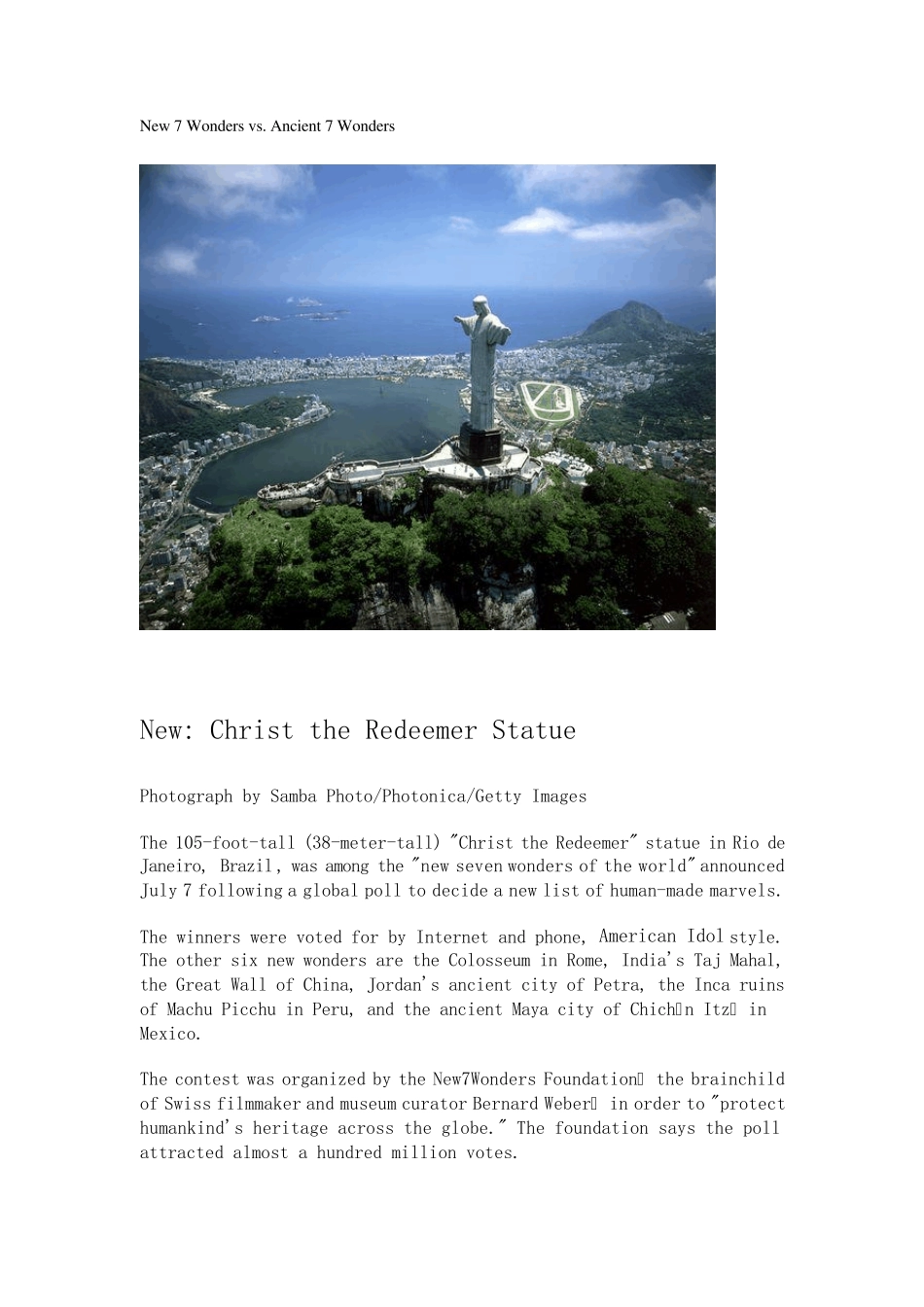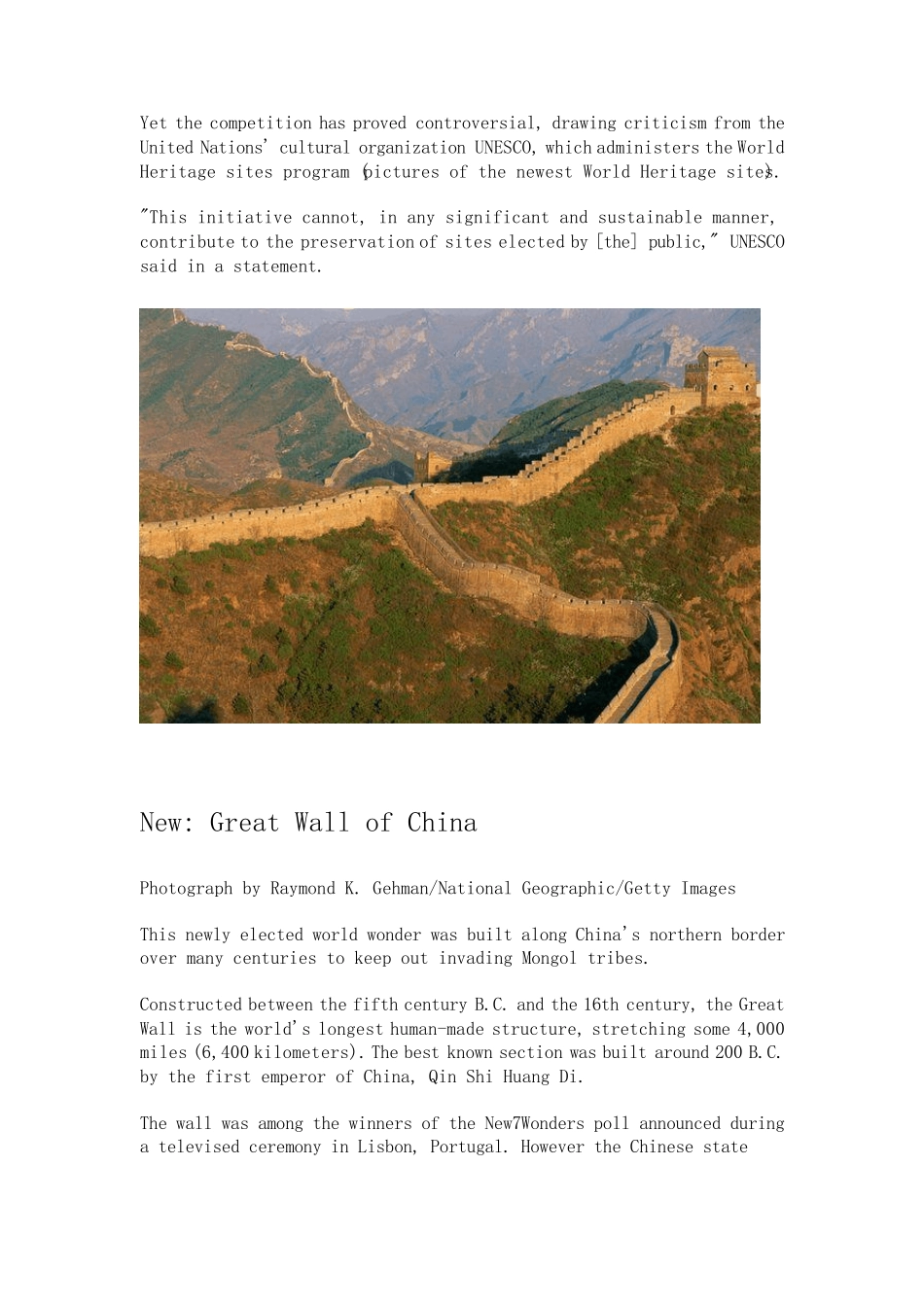New 7 Wonders vs. Ancient 7 Wonders New: Christ the Redeemer Statue Photograph by Samba Photo/Photonica/Getty Images The 105-foot-tall (38-meter-tall) "Christ the Redeemer" statue in Rio de Janeiro, Brazil , was among the "new seven wonders of the world" announced July 7 following a global poll to decide a new list of human-made marvels. The winners were voted for by Internet and phone, American Idol style. The other six new wonders are the Colosseum in Rome, India's Taj Mahal, the Great Wall of China, Jordan's ancient city of Petra, the Inca ruins of Machu Picchu in Peru, and the ancient Maya city of Chichén Itzá in Mexico. The contest was organized by the New7Wonders Foundation— the brainchild of Swiss filmmaker and museum curator Bernard Weber— in order to "protect humankind's heritage across the globe." The foundation says the poll attracted almost a hundred million votes. Yet the competition has proved controversial, drawing criticism from the United Nations' cultural organization UNESCO, which administers the World Heritage sites program (pictures of the newest World Heritage sites). "This initiative cannot, in any significant and sustainable manner, contribute to the preservation of sites elected by [the] public," UNESCO said in a statement. New: Great Wall of China Photograph by Raymond K. Gehman/National Geographic/Getty Images This newly elected world wonder was built along China's northern border over many centuries to keep out invading Mongol tribes. Constructed between the fifth century B.C. and the 16th century, the Great Wall is the world's longest human-made structure, stretching some 4,000 miles (6,400 kilometers). The best known section was built around 200 B.C. by the first empe...


